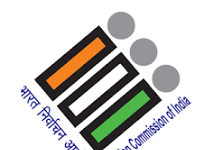
President Joe Biden’s first overseas trip put his diplomatic and negotiating philosophy on display, as he rallied traditional US democratic allies to face new and old challenges, and after a one-on-one meeting with Russian President Vladimir Putin, he offered an often rosy assessment of the possibilities of cooperation.
After their conference in Switzerland, Biden and Putin did not use the phrase “reset” to describe the status of relations between the two countries. But that’s exactly what the discussion became, with both men marking out distinct areas of dispute while also pointing to smaller-scale areas where they could work together.
They expressed mutual respect as well as suspicion. After Donald Trump’s administration, which seemed to elevate Putin and establish at least the goal that the two countries could be more like partners, there was a sudden return to more traditional US-Russia framing.
Each leader left this time with the knowledge that some of the old norms still apply. Russia reclaims its status as a “legitimate enemy,” rather than a “fellow,” as Biden phrased it. Long-standing disputes over cyber warfare and human rights continue to exist.
Biden’s upbeat demeanor contrasted sharply with Putin’s more somber, reserved demeanor after their three-hour meeting when reporters questioned him about human rights issues in Russia and the country’s invasion of Ukraine.
Nonetheless, Biden admitted that his confidence was based on wishful thinking rather than fact. It emphasized the president’s negotiation style, which includes openly expressing his conviction that a deal can be reached despite often overwhelming odds, whether with Putin or with Senate Republicans on infrastructure at home.
Biden added, “I know we make foreign policy out to be this wonderful, amazing skill that is sort of like a hidden code. Every aspect of foreign policy stems from human relationships. It’s just how human nature works.”
“There is a benefit in being realistic and putting on an optimistic front, an optimistic face,” he later remarked. The majority of Biden’s meetings were held in private, without cameras, or with only a few moments available to the press during his tour.
It demonstrated Biden’s belief in intangible personal ties as a driver of international and domestic policy results. Biden is betting that a return to the “old school” approach will be welcomed by those leaders. Before leaving Washington, Biden reaffirmed his belief that democracies are engaged in a generational struggle with autocratic governments, and that the United States cannot win if it stands alone.
Before he met with Putin, he rallied American allies at the Group of Seven conference of affluent countries and treaty partners at NATO.
The unified-front posture with partners was supposed to enhance Biden’s position on Russia, and the sequencing was as much strategy as symbolism.
It also gave a boost to the US’ ongoing economic, security, and health-care standoff with China, as Biden won severe wording on China in both the G-7 leaders’ communique and NATO countries’ joint statement. Following a series of disruptive cyberattacks perpetrated by Russia, Biden encouraged Putin to rein in criminal and state-sponsored activities by warning of American digital firepower and his willingness to use it.
Biden said he provided Putin a list of 16 “vital infrastructure” areas, ranging from energy to water systems, and that the two leaders agreed to appoint experts to “work on precise understandings about what’s off-limits” in this new arena. Putin used familiar — but now more potent — whatabouts in his press conference following his meeting with Biden to deflect attention away from his deadly crackdowns on political dissenters, citing the Capitol assault and Black Lives Matter protests against racial injustice and police brutality in the United States last year.
Though it was evident that some harm could not be undone quickly, Biden labeled it a “ridiculous comparison.”









